
 Flash News
Flash News
Murder in Tale, the author of the execution of Pjetër Kazaj is identified
The draw is made, judge Elsa Ulliri will judge the "Partizani" case
Injury of 15-year-old at "Ali Demi"/ The perpetrator and the owner of the pizzeria are wanted, 3 employees are arrested
Two vehicles burned in Maliq, arson suspected
Foreign Language Exam, on Tuesday the 'fever' officially begins for high school graduates
Cutoff of funds, DASH: About 70 billion dollars are spent every year, transparency is needed
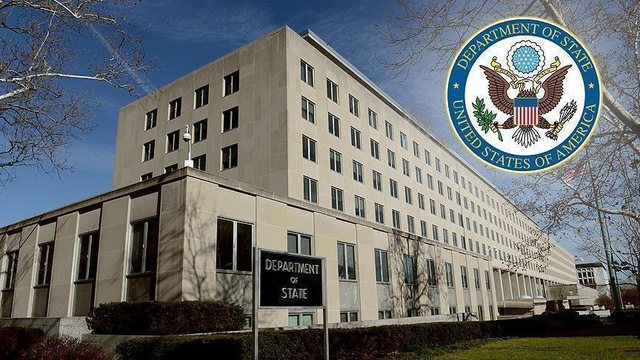
The US State Department has reacted through a statement to the media regarding the suspension for a period of 90 days of foreign funding that the US makes worldwide, following the Executive Order signed by Donald Trump.
The statement notes that at this stage, more than $1 billion in spending has been cut, which is inconsistent with an "America First" agenda.
It is further stated that over the past few years, the US has spent about $70 billion in foreign aid each year, being more than the GDP of some US states.
Full reaction:
"Americans are a hardworking and generous people, who have sacrificed their blood and wealth to help other people around the world. But no foreign nation is entitled to these benefits, and no foreign aid program is above scrutiny."
The previously announced 90-day pause and review of U.S. foreign assistance is already delivering results for our country and our people. We are eliminating unnecessary spending. We are blocking “woke” programs. And we are uncovering activities that are against our national interests. None of this would be possible if these programs were left on autopilot.
Every dollar we spend, every program we fund, and every policy we pursue should make America safer, stronger, and wealthier. And that's exactly what we're doing now – by prioritizing America's core national interests, dollar for dollar.
How much does the United States spend each year on foreign aid?
Even without taking into account generous support for Ukraine over the past few years, the United States is spending about $70 billion on foreign aid each year. That’s more than the GDP of several U.S. states and accounts for four out of every ten dollars in global humanitarian aid. Americans deserve transparency and accountability for every dollar we spend, especially when it’s spent abroad rather than at home.
Why did the US State Department initiate a 90-day pause on foreign aid?
It is impossible to evaluate programs that are on hold because participants—inside and outside government—have little or no incentive to share details about the programs as long as the money keeps flowing. A temporary pause, with reasonable exceptions for life-threatening situations, is the only way to review and prevent unnecessary spending.
What kind of expenses have been prevented by the pause?
Without this pause, American taxpayers would have provided condoms (and other contraceptive services) in Gaza, climate justice marketing services in Gabon, clean energy programs for women in Fiji, gender development programs in Washington, family planning throughout Latin America, sex education and abortion support programs for young women around the world, and much more. These kinds of programs do not make America stronger, safer, or richer.
What types of financing are allowed to continue?
The originating order, dated January 24, 2025, contained several important exemptions, including “emergency food assistance,” and set out the process for securing other exemptions. The requests were reviewed and, where necessary, approved within hours. The Secretary then approved a broad exemption on January 28, 2025, for humanitarian assistance, which is defined as “life-saving medications, medical services, food, shelter, and survival assistance, as well as supplies and reasonable administrative expenses to provide such assistance.”
Are there any exceptions for non-humanitarian aid?
Critical national security exemptions were granted, including to ensure the protection of U.S. personnel in the field, to facilitate the repatriation of illegal immigrants, to enforce nonproliferation obligations, and much more. As noted, the exemptions were reviewed and, where necessary, approved within hours.
What is the process for securing an exemption?
The Department provided clear guidance on January 24, 2025, encouraging offices that manage foreign assistance to submit requests for exemptions with the following information:
Name of Office/Department/Mission
Program Name
Program Description
Program Location
Expected Program Outcome
Justification for Exclusion
Financial and allocation information
This process was used successfully dozens of times in the early days, however, many requests did not provide the level of detail necessary to enable a full assessment. Further guidance, sent on January 28, 2025, encouraged implementing partners and NGOs to work with U.S. government agency partners on any additional requests.
How much has this process saved American taxpayers?
In just a few days, the Department received requests for exemptions worth billions. Most of these requests are still under merit-based review, as they are not considered emergency or life-threatening; however, even at this early stage, more than $1,000,000,000 in spending inconsistent with an America First agenda has been prevented,” the DASH statement said.
Latest news



Traffic jams and over 14 thousand fines, Traffic Police take stock of the week
2025-06-02 13:40:51
Eurosceptic Nawrocki wins presidential election in Poland
2025-06-02 13:33:27

Hysaj: Against Serbia with calm and courage, this match is for national pride
2025-06-02 13:14:41

Bulgaria defies chaos and continues on path to euro
2025-06-02 12:53:28


Elected MP, Tedi Blushi resigns from Tirana Municipal Council
2025-06-02 12:29:36

Murder in Tale, the author of the execution of Pjetër Kazaj is identified
2025-06-02 12:07:27


'Justice for Hamid': Activists protest against Gjadri camp
2025-06-02 11:41:26
The draw is made, judge Elsa Ulliri will judge the "Partizani" case
2025-06-02 11:26:52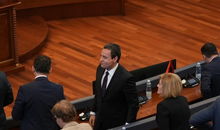
The 25th attempt to constitute the Kosovo Assembly also fails
2025-06-02 11:12:29





Coefficients, how calculations are made for newly retired people
2025-06-02 10:11:17
Two vehicles burned in Maliq, arson suspected
2025-06-02 10:00:03

Logu: They deny us transparency about the May 11th farce!
2025-06-02 09:44:46
Ten ways to feel energized if even coffee doesn't work for you
2025-06-02 09:33:49
I shpallur në kërkim për llogari të Kosovës, arrestohet i riu nga Tepelena
2025-06-02 09:24:39
African heat wave begins in Albania, meteorology warns of dry summer
2025-06-02 09:11:48
Foreign exchange, how much foreign currencies are sold and bought today
2025-06-02 09:02:45
Truck catches fire on 'Rruga e Kombit', driver escapes
2025-06-02 08:56:21
On the May 11 electoral farce in Albania
2025-06-02 08:47:54

Priest Kristaq Vaso dies after falling from church roof in Korça
2025-06-02 08:32:29

Horoscope, what do the stars have in store for you today?
2025-06-02 08:10:47
Stable weather across the country, weather forecast
2025-06-02 07:59:25
Morning Post/ In 2 lines: What mattered yesterday in Albania
2025-06-02 07:46:43
Official, Juventus appoints Damien Comolli as general director
2025-06-01 21:57:45
"Russia could attack NATO in the next 4 years," warns German defense chief
2025-06-01 21:34:42
Kuçana: Opposition candidates have been threatened by "Rama's gangs in Shkozet"
2025-06-01 21:11:15


15-year-old injured in shooting at Ali Demi's pizzeria, details from police
2025-06-01 19:51:19

Russia accuses Ukraine of 'terrorist attack' on air bases
2025-06-01 18:57:24
A hospital in Hamburg, Germany, catches fire, killing three patients
2025-06-01 18:32:28
Nesho: Rama's autocratic regime has not allowed free elections to take place
2025-06-01 18:10:23
Moroccan immigrant's suicide, activist: There are inhumane conditions in Gjadra
2025-06-01 17:49:32
World Bank Report, PL: Confirms that the majority of Albanians live in poverty
2025-06-01 17:23:56

31 dead after Israeli attack near Gaza aid center
2025-06-01 16:40:30
At least 150 dead in Nigeria floods
2025-06-01 16:14:26
Flames engulf the Darëzeza forest massif in Fier
2025-06-01 15:56:41
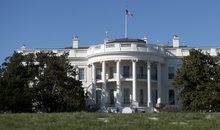
SHBA-ja i dërgon Iranit një propozim për marrëveshje bërthamore
2025-06-01 14:54:11


Moroccan immigrant commits suicide, activists protest in front of Gjadri camp
2025-06-01 13:48:17
PSG victory celebrations turn into tragedy, two dead, over 500 arrested
2025-06-01 13:26:33

Kosovo-Albania arms trafficking, Tirana Court leaves 8 arrested in prison
2025-06-01 12:41:11
Foreign worker dies at work, engineer of construction firm arrested in Tirana
2025-06-01 12:20:27
Car hits motorbike, 25-year-old dies in Bilisht
2025-06-01 11:56:56

Why doesn't the Vatican recognize the state of Kosovo?
2025-06-01 11:22:07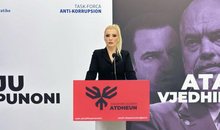

22-year-old arrested in Durrës, cocaine doses found hidden in his car
2025-06-01 10:40:20
Merz to meet Trump in Washington on June 5
2025-06-01 10:18:13
Today, June 1st, is World Children's Day.
2025-06-01 10:01:13
Foreign exchange, the rate at which foreign currencies are sold and bought
2025-06-01 09:47:21
After the elections, the "fiscal peace" ends, the "war" begins
2025-06-01 09:24:30
PSG defeats Inter, grabs Champions League trophy
2025-06-01 09:08:08

Horoscope, what do the stars have in store for you today?
2025-06-01 08:40:10
Serious in Tale, Lezha! 57-year-old man executed in the yard of his apartment
2025-06-01 08:25:55
Temperatures up to 31 degrees Celsius, weather forecast
2025-06-01 08:15:33
Morning Post/ In 2 lines: What mattered yesterday in Albania
2025-06-01 08:01:33
Anemia increases in the population
2025-05-31 22:18:38
Elections, Noka: A farce took place in Albania on May 11
2025-05-31 21:44:55


Jola Hysaj after the result in Durrës: The vote may have been alienated
2025-05-31 20:37:16

He was shot by his compatriot in Podgorica, the young 23-year-old Albanian dies
2025-05-31 19:58:13


Ndërtime pa siguri? Humb jetën punëtori boshnjak në Tiranë
2025-05-31 18:59:42


Russian attacks kill at least seven people in Ukraine
2025-05-31 17:35:43
Study: Half of the world experienced one more month of summer in 2024
2025-05-31 17:10:40
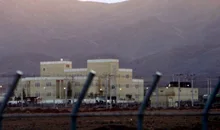



Tragedy in Germany, small plane crashes into a residential complex, two dead
2025-05-31 15:24:43

